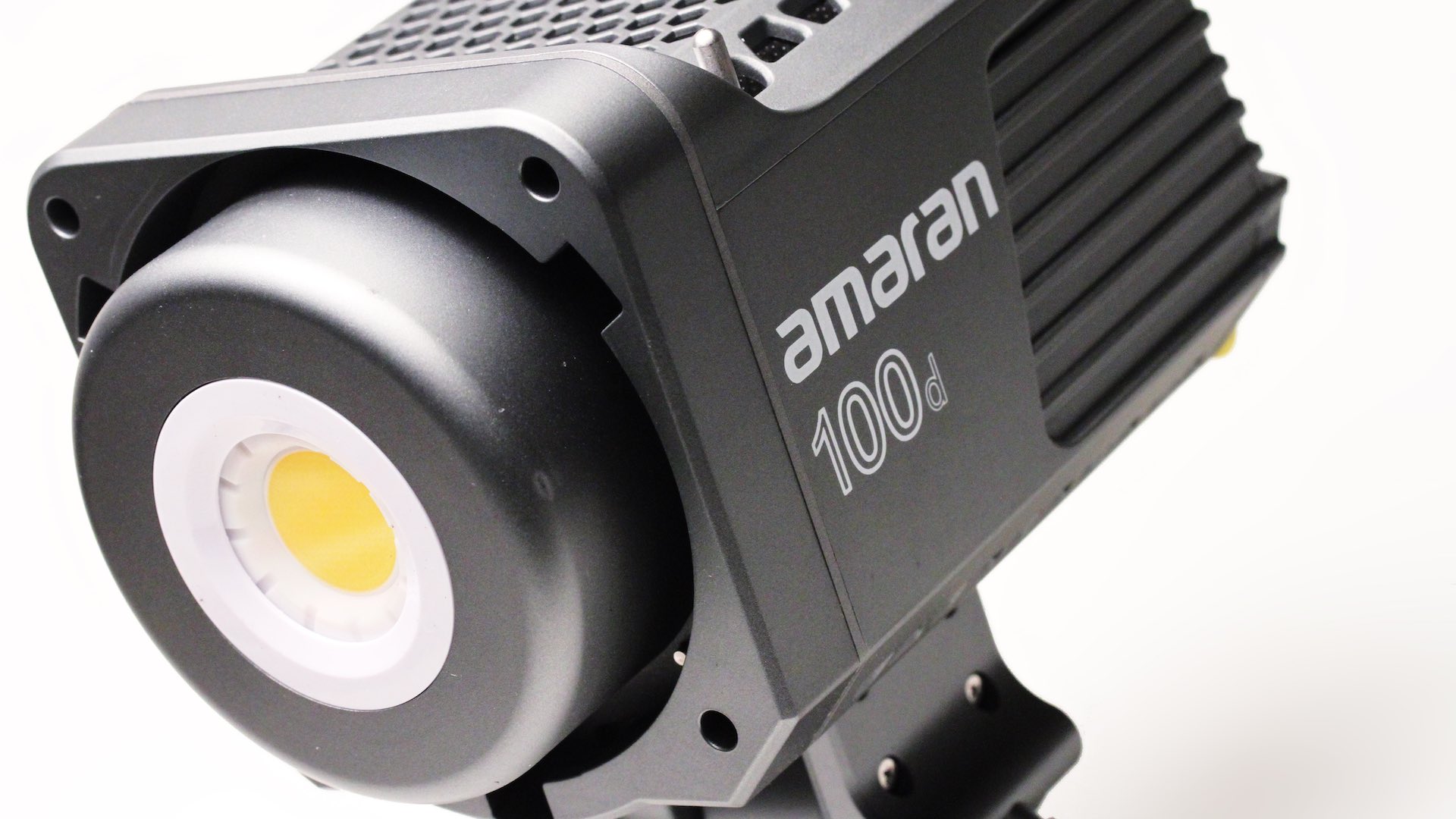
Aputure's low cost hardlight strikes a good balance between price and performance.
Aputure’s Amaran range exists to address a pretty straightforward need. Some people will always look for the highest price-performance ratio, and so evaluating the Amaran 100D hardlight is really a matter of ensuring we don’t sacrifice too much performance on the altar of value for money.
The company’s first LED hardlight was the LightStorm-branded 120-watt design in very much the same power range as the 100D we’re looking at here. It was hugely influential, being among the most popular designs to adopt the layout of a stills studio flash head, right down to the Bowens-compatible accessory mount which it arguably helped popularise. The 100D is even more compact than the 120 series and represents a feat of miniaturisation given it has much the same thermal issues to handle.
The 100D retains the Bowens mount, and it’s supplied with the same multifaceted reflector that debuted with the 300D II. This improved output by more than a stop over the conventional, more diffuse reflector. Inevitably, given what’s essentially a transitional PAR, there is a concomitant tradeoff in coverage and shadow quality. The 100D is, presumably, more or less compatible with a huge range of Bowens-compatible accessories from Aputure and other companies too; the smaller-than-average emitter shouldn’t hurt most applications.
There’s an external 48V DC mains power supply, with IEC inlet, which connects to the light via a 3-pin XLR connector. There’s perhaps a note of concern to raise over the overuse of 3-pin XLR connectors for everything in film and TV. It’s a good connector design, but beyond audio, this is not the only device to use it as a power connector, with no likelihood of compatibility with any other.
The IEC connector supplied is a latching design, which is good, although both the IEC mains and DC cables are supplied bundled with twist ties into an easy-tangle mess that won’t lie flat or coil easily. It felt like we’d started to avoid this on the 300D II, which tortured only its mains lead in this way, but it seems it’s a crusade we’ll have to keep fighting. Please, manufacturers of basically all the world’s tech, we know things like this are just purchased components, but coil the cables properly. On a more positive note, while we’re dealing with minutiae, the light remembers its brightness setting when the power goes away, and it fires up when mains is applied, so three cheers for that.
It’s no longer that hard to make a white-emitting, fixed colour temperature LED of reasonable quality, and the 100D does as well as we’d expect. Measured at 100%, 50% and 5%, TLCI is never lower than 95.6. At very low output, there is a very small drift toward the green, with the colour indicated at 0.329, 0.339 on a CRI 1931 chart, although it’s hard to realistically call such a small offset a “plus-green error.” The characteristic blue spike of an LED is very present though there are signs of modern broad-spectrum phosphors in the blue-red area. As with many white LEDs, all should be well unless you need to illuminate something which reflects strongly at about 480nm.
The light is described as “daylight” and generally measures around 5700K at high output; assuming we want 5600K, that’s well within experimental error. Inevitably, it doesn’t really match every other daylight LED; if they’re all correct, they’re just not correct in the same way. Such is the state of lighting in 2022. Output, meanwhile, is downright impressive; measured at a metre, with the multifaceted reflector in place, the light develops a little over 16,000 lux. Note that’s fractionally more than a 300D Mk. II with the old reflector. Such is the value of a solid optical design.
The cost control measures show to an extent in the physical build; there’s more plastic than Aputure’s spendier options, though they’re not entirely metal either. The tilt lock is plastic but there is a steel insert in the baby pin receiver, and the pin clamping screw and its grip is entirely metal. The cost control seems to have worked, anyway; the Amaran 100D seems to go for a bit over £200 in the UK, which makes it a third of the 300D’s output for a fifth the money. About the only question is whether it’s worth going for the 200D, which is 100% more power for 50% more money. If you’re after something very lightweight to fill a handheld china ball or setting up the back bedroom for YouTube, look no further.
Tags: Production


Comments